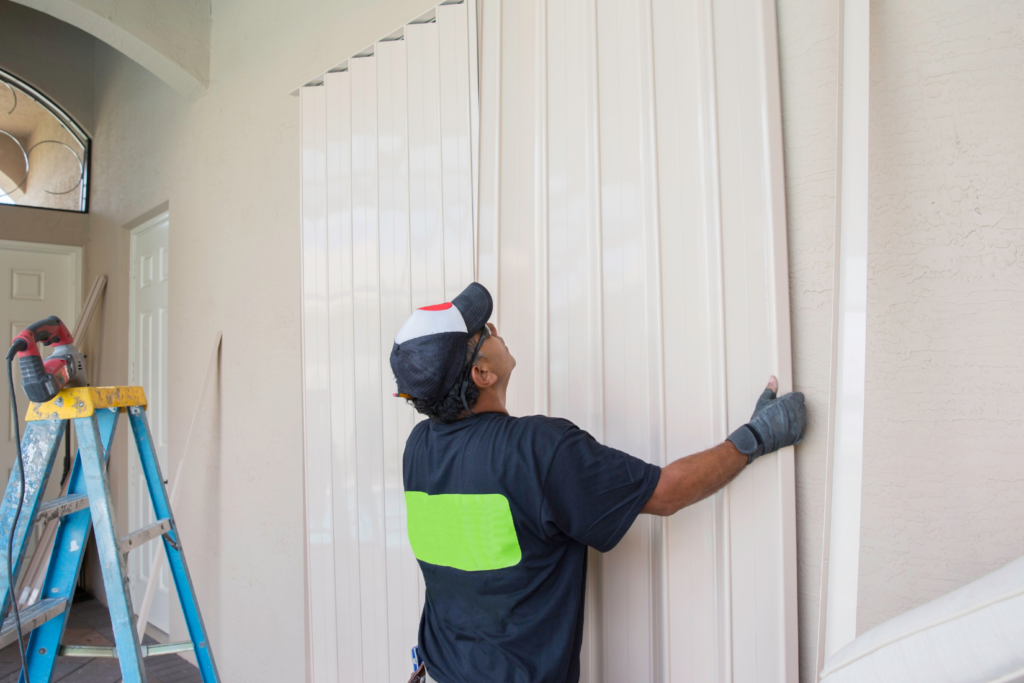Hurricane season is a critical time for homeowners, especially those in coastal areas. Preparing your home and understanding your insurance coverage can make all the difference in ensuring your safety and safeguarding your property. Here’s a comprehensive guide to prepping for a hurricane… Check out our guide below.
Questions? Reach out to one of our knowledgeable agents. We’re eager to set you up with the right coverage and rate!

Understanding Your Risk
The first step in hurricane preparedness is understanding your home’s vulnerability. Assess your risk by:
- Checking your flood zone designation through FEMA’s maps.
- Reviewing local hurricane history to gauge potential impacts.
- Knowing your risk level will help you take appropriate precautions.
Review Your Insurance Policy
Your insurance policy plays a pivotal role in hurricane preparedness. Here are key components to check:
- Homeowners Insurance: Ensure it covers wind damage, as not all policies do. Familiarize yourself with your deductible and coverage limits.
- Flood Insurance: Standard homeowners’ insurance usually does not cover flood damage. Consider purchasing separate flood insurance, especially if you live in a flood-prone area.
Take the time to discuss your policy with your agent to ensure you have adequate coverage before the storm hits.
Creating an Emergency Plan
An effective emergency plan can save lives and minimize chaos during a hurricane. Consider these steps:
- Communication: Designate a meeting place for family members and set up a communication plan.
- Evacuation Routes: Familiarize yourself with local evacuation routes and have a plan in place for transportation.
Regularly review and practice your emergency plan to ensure everyone knows their role.
Preparing Your Home
Taking proactive measures can help protect your property from hurricane damage:
- Secure Windows and Doors: Install storm shutters or board up windows with plywood to prevent breakage.
- Clear Gutters and Drains: Ensure water can flow freely to prevent flooding around your home.
- Landscape Wisely: Trim trees and secure outdoor furniture to prevent them from becoming projectiles.
These steps can reduce damage and keep your home safer during a storm.
After the Storm: What to Do
After the hurricane passes, the work isn’t over. Follow these steps for handling post-storm recovery:
- Document Damage: Take photographs of any damage for insurance claims.
- Contact Your Insurance Provider: Report damage as soon as possible and provide all necessary documentation.
Be patient, as processing claims can take time after a significant weather event.
Being well-prepared for a hurricane can significantly impact your safety and recovery. By understanding your risks, reviewing your insurance, and taking actionable steps to prepare your home, you can weather the storm with greater confidence.
If you’re looking for a new provider, contact Cornerstone Insurance Agency LLC (“Cornerstone Insurance”), one of our agents will be happy to help you find what you need.
This article is for informational purposes only. You should not act based on this information without first consulting with your insurance agent; if you would like a quote from a Cornerstone Insurance Agency licensed agent, contact us. We disclaim all liability for actions taken or not taken by you based on the contents of this article which is provided “as is.” Cornerstone makes no representation that this content is error-free.

